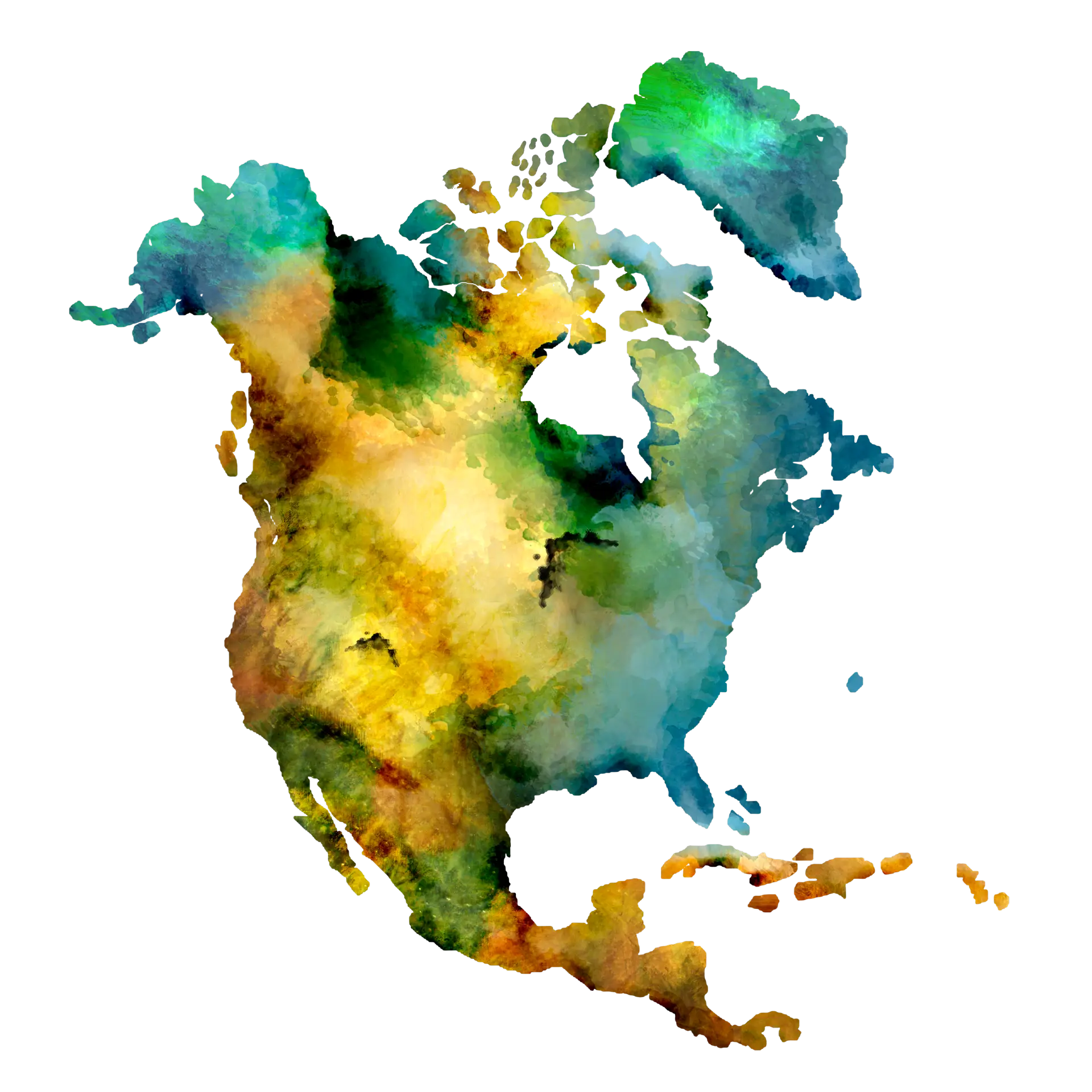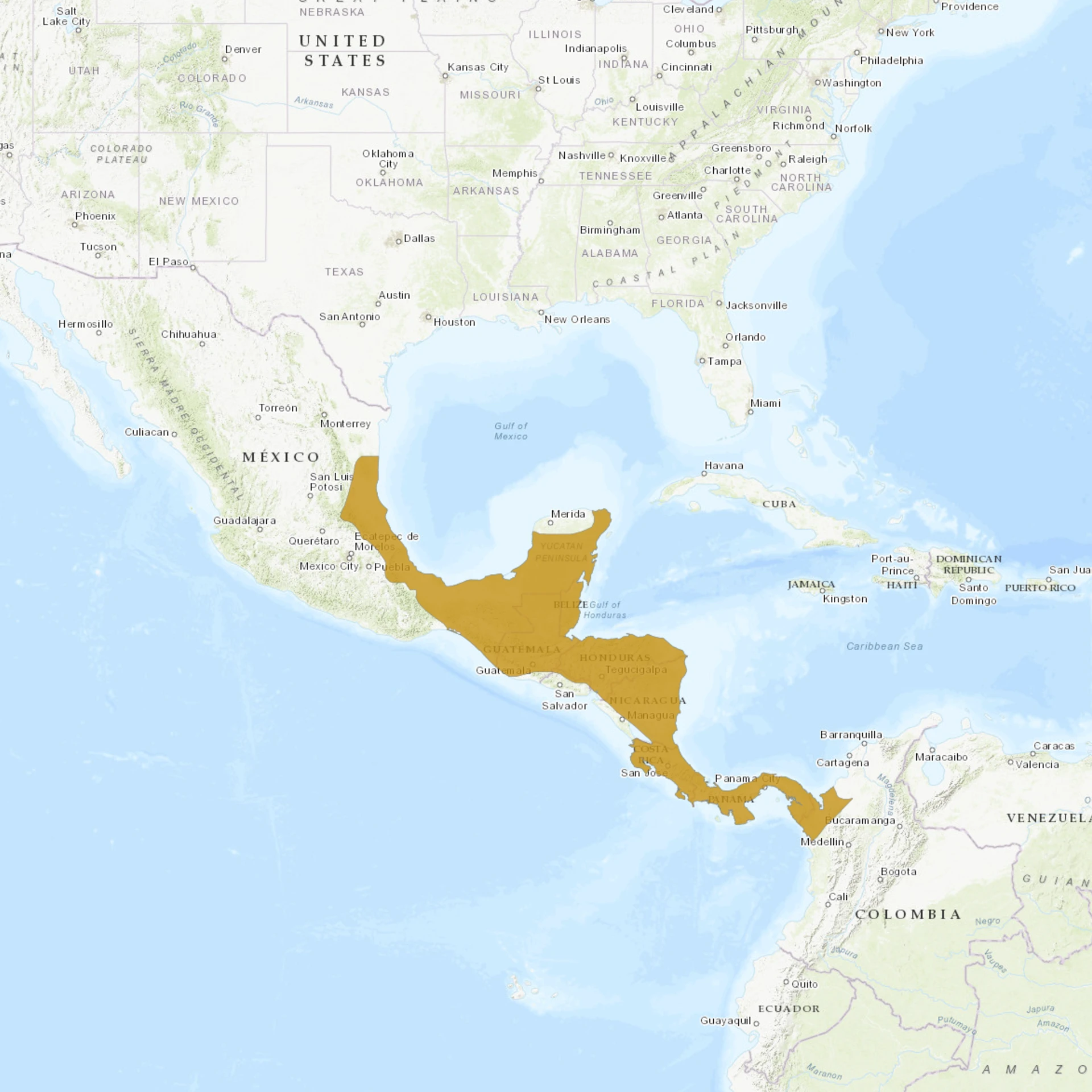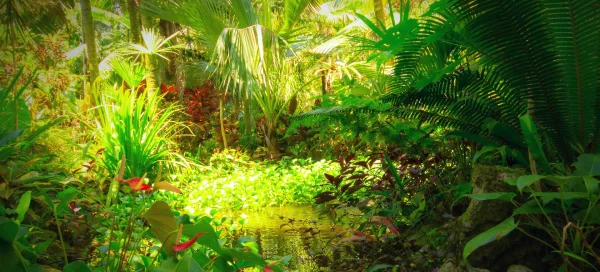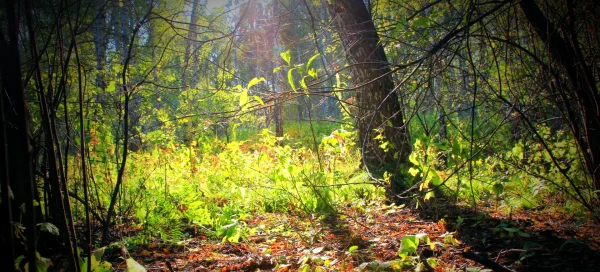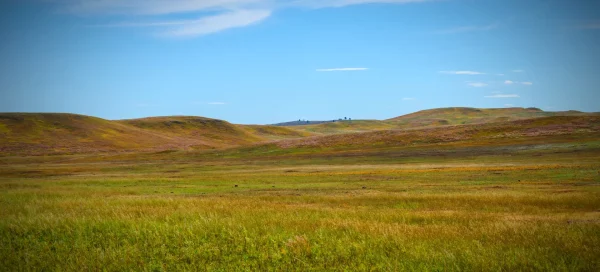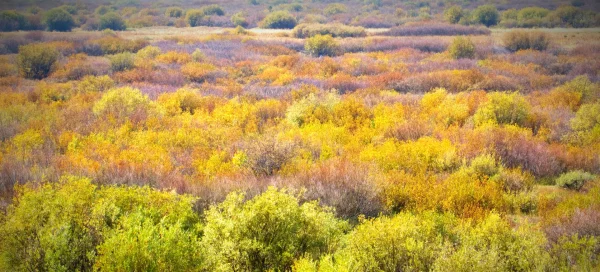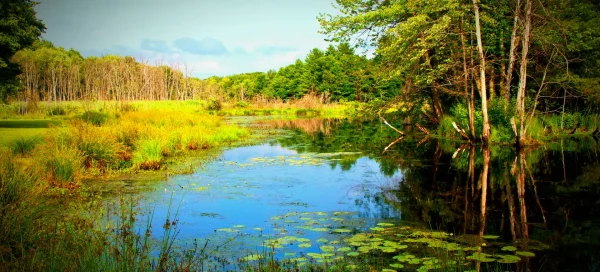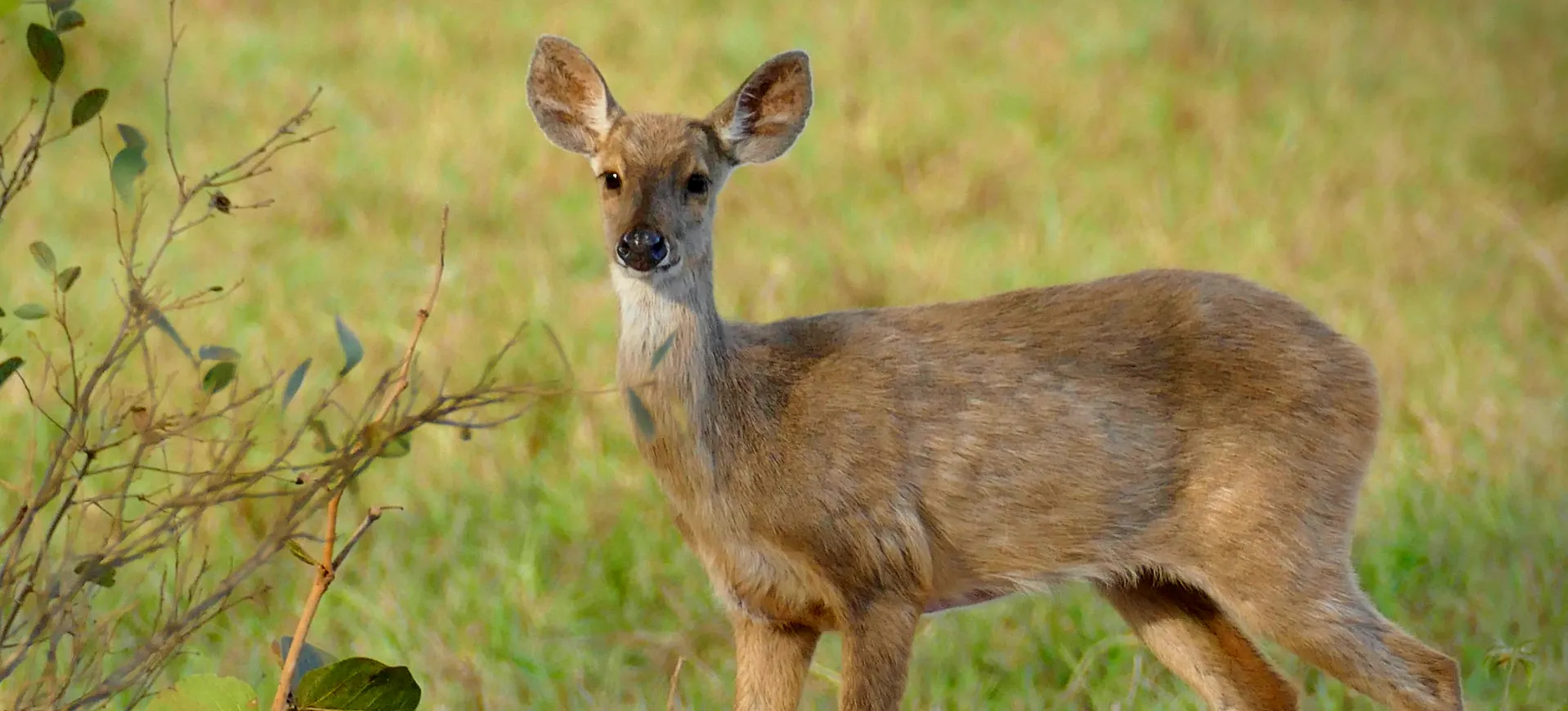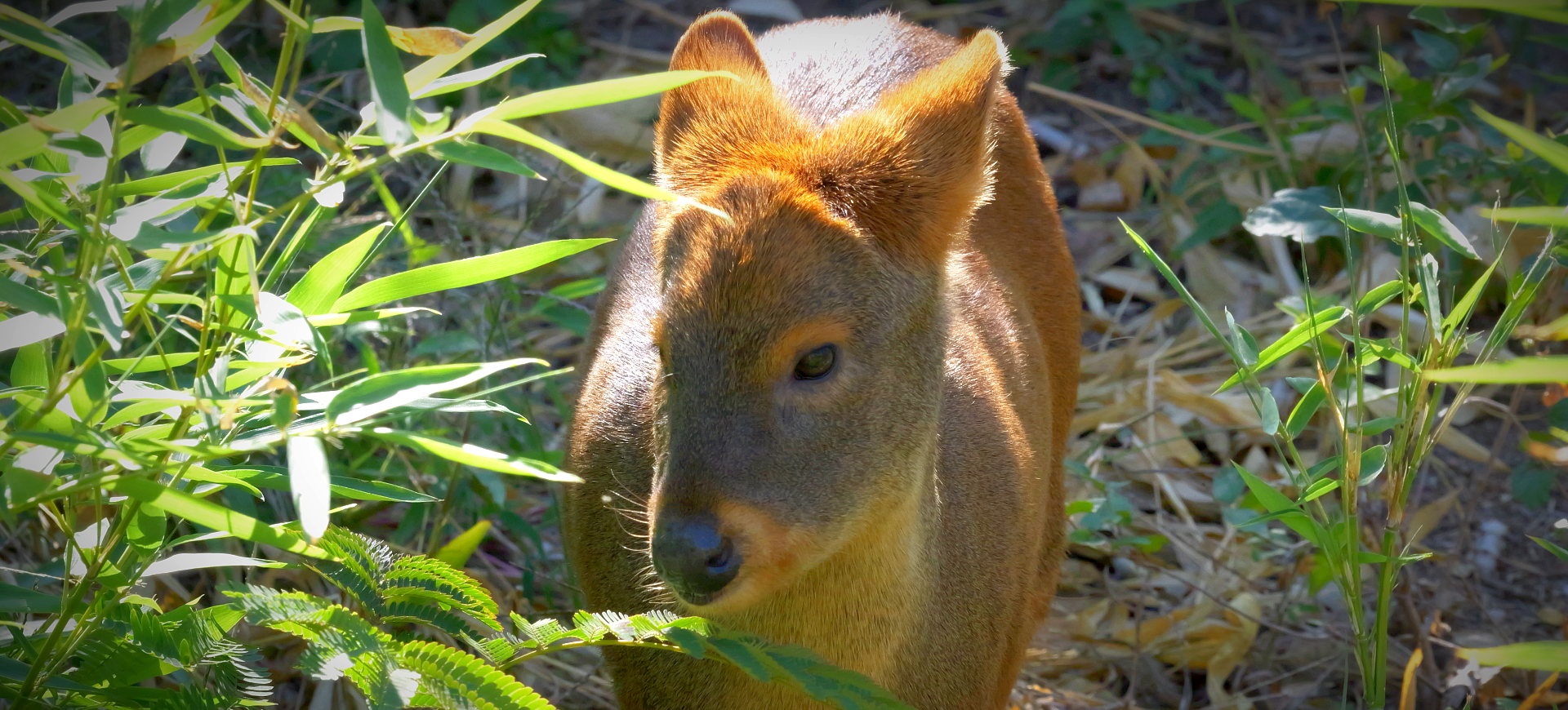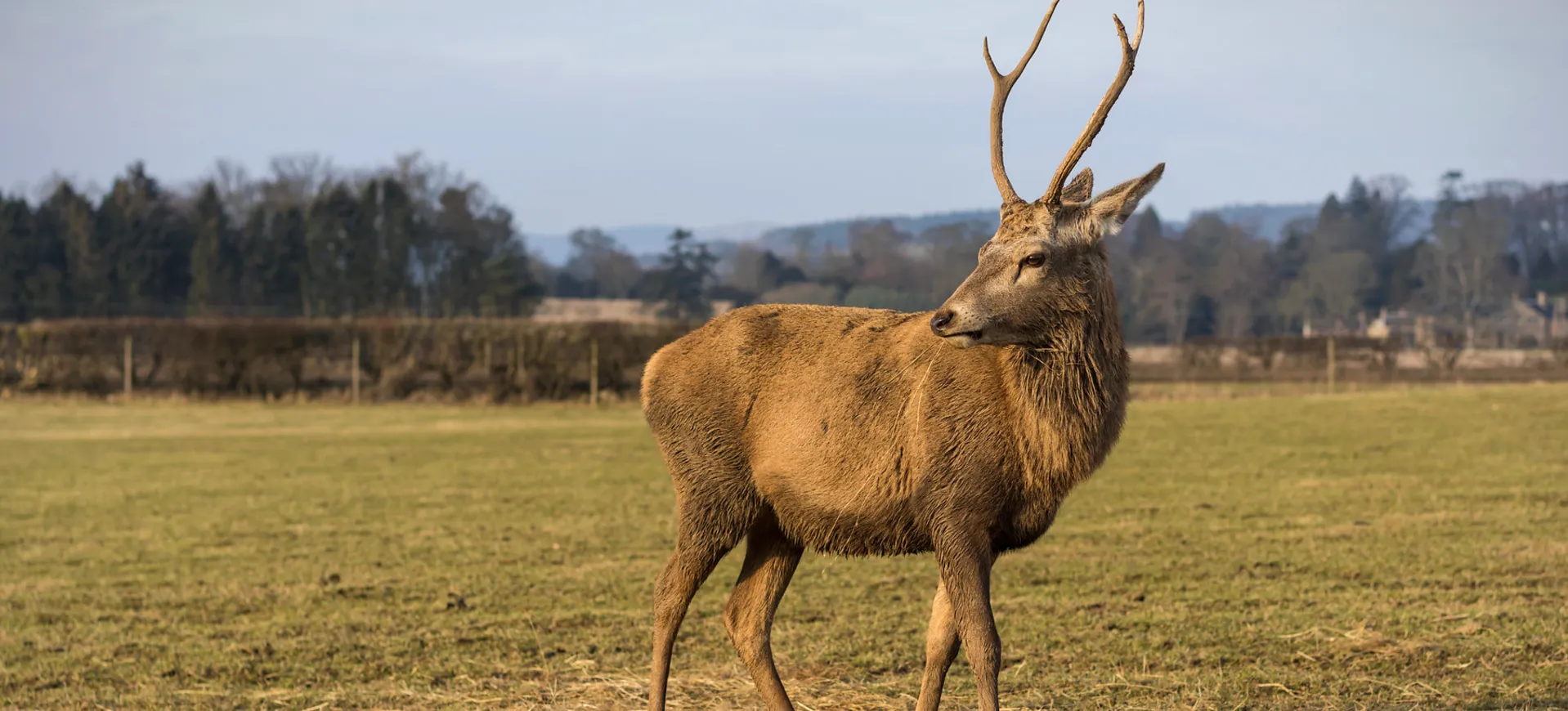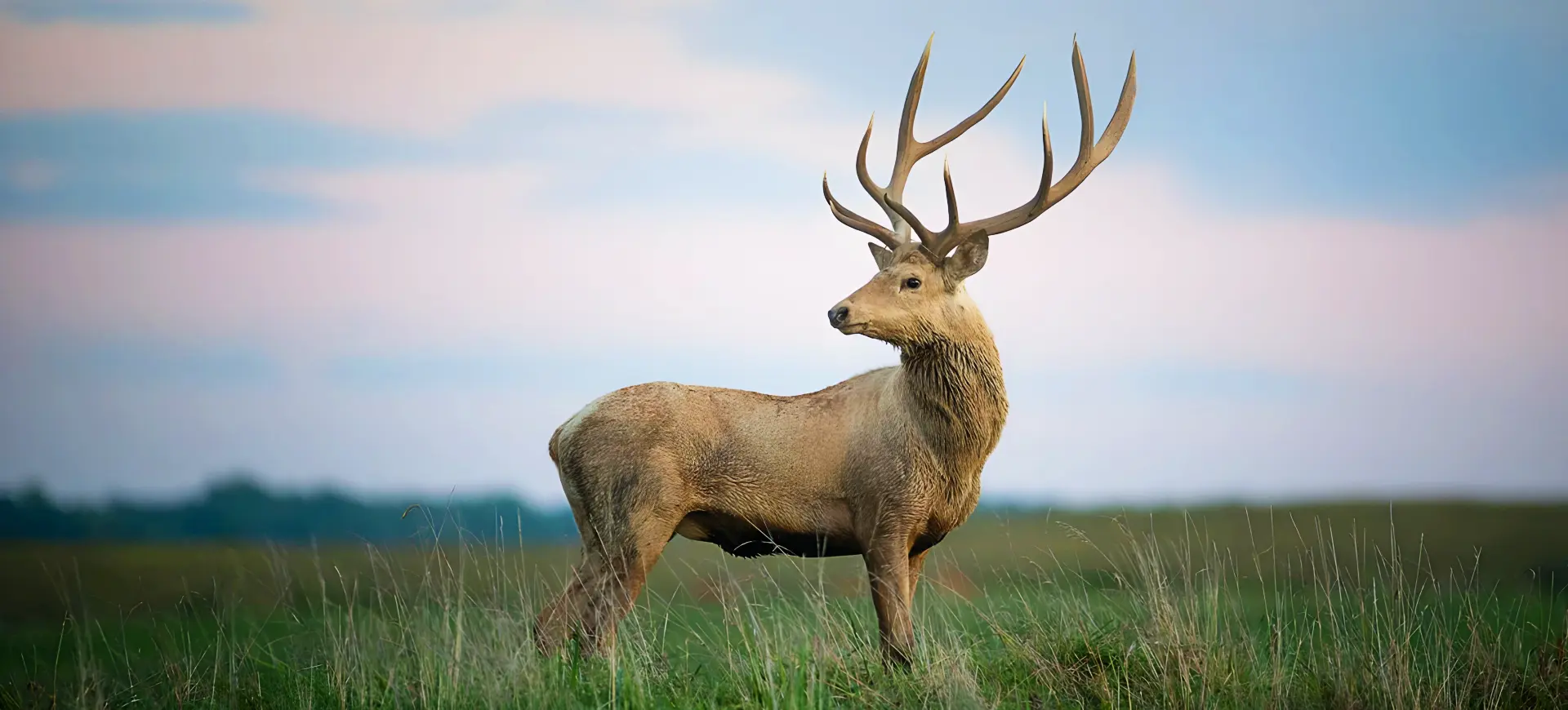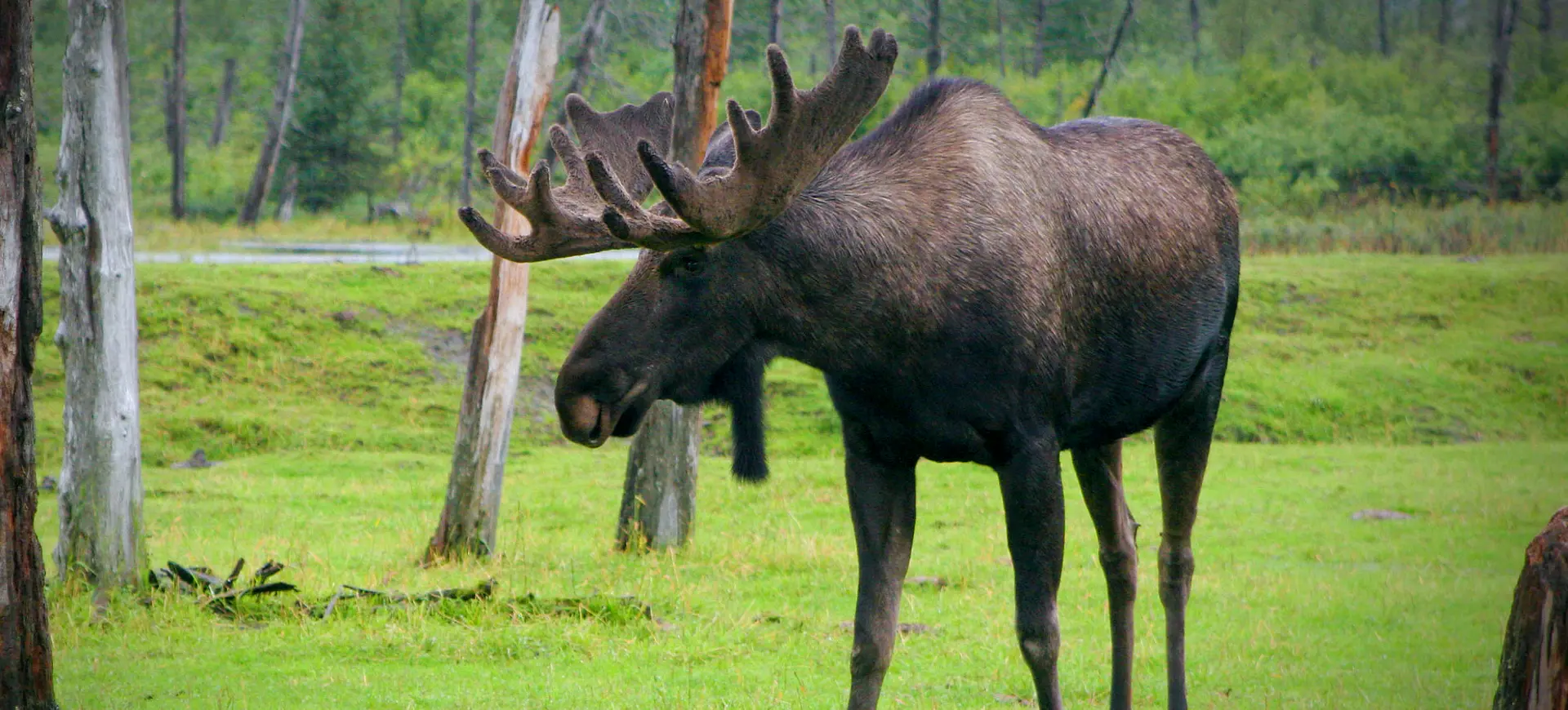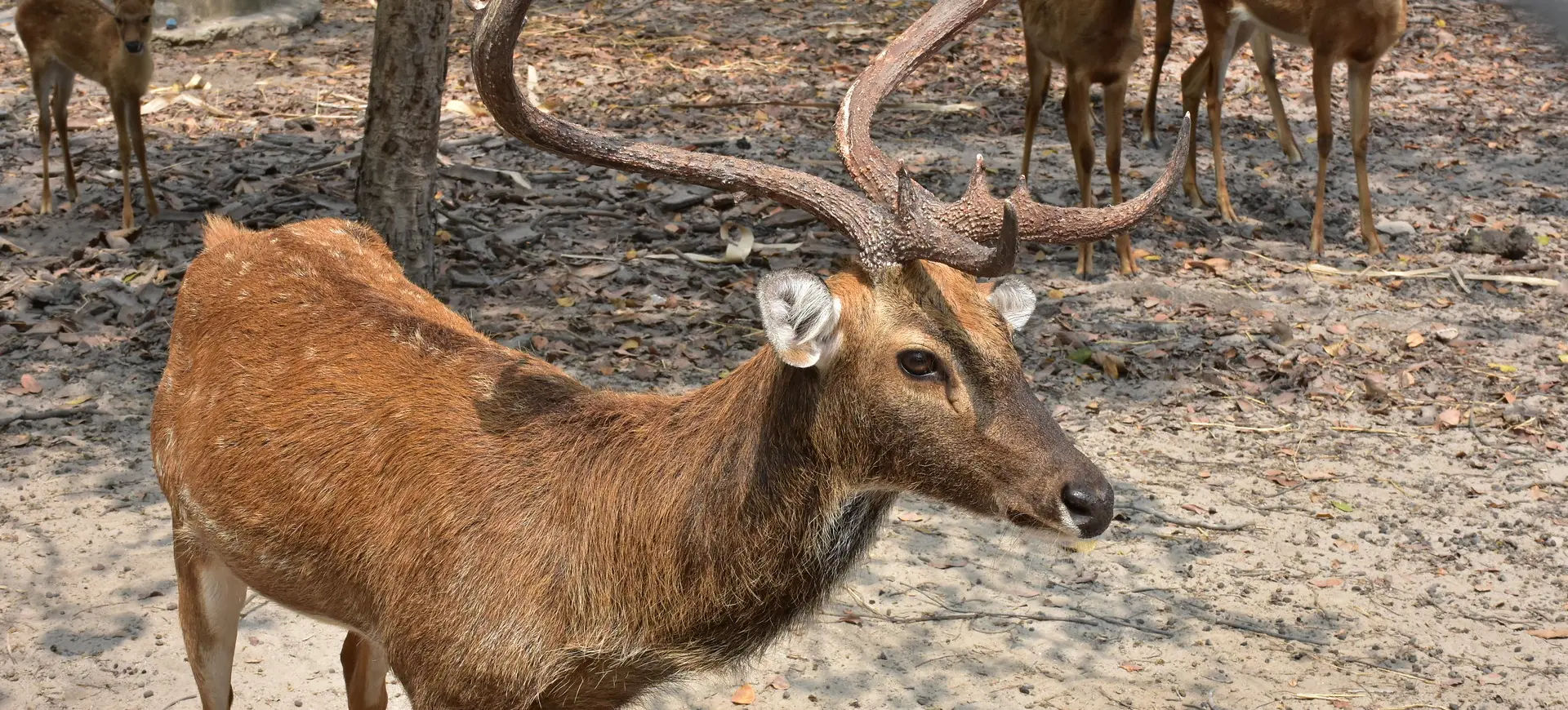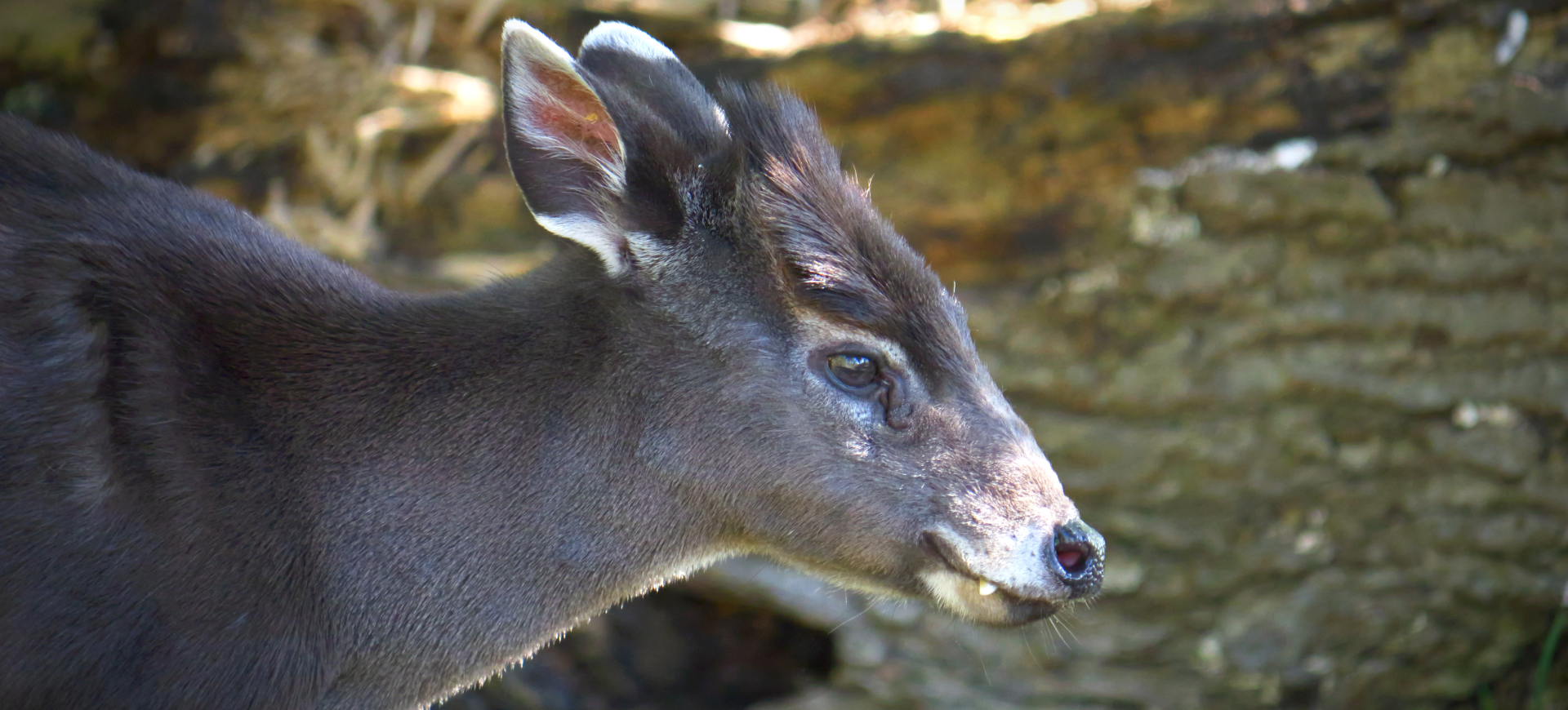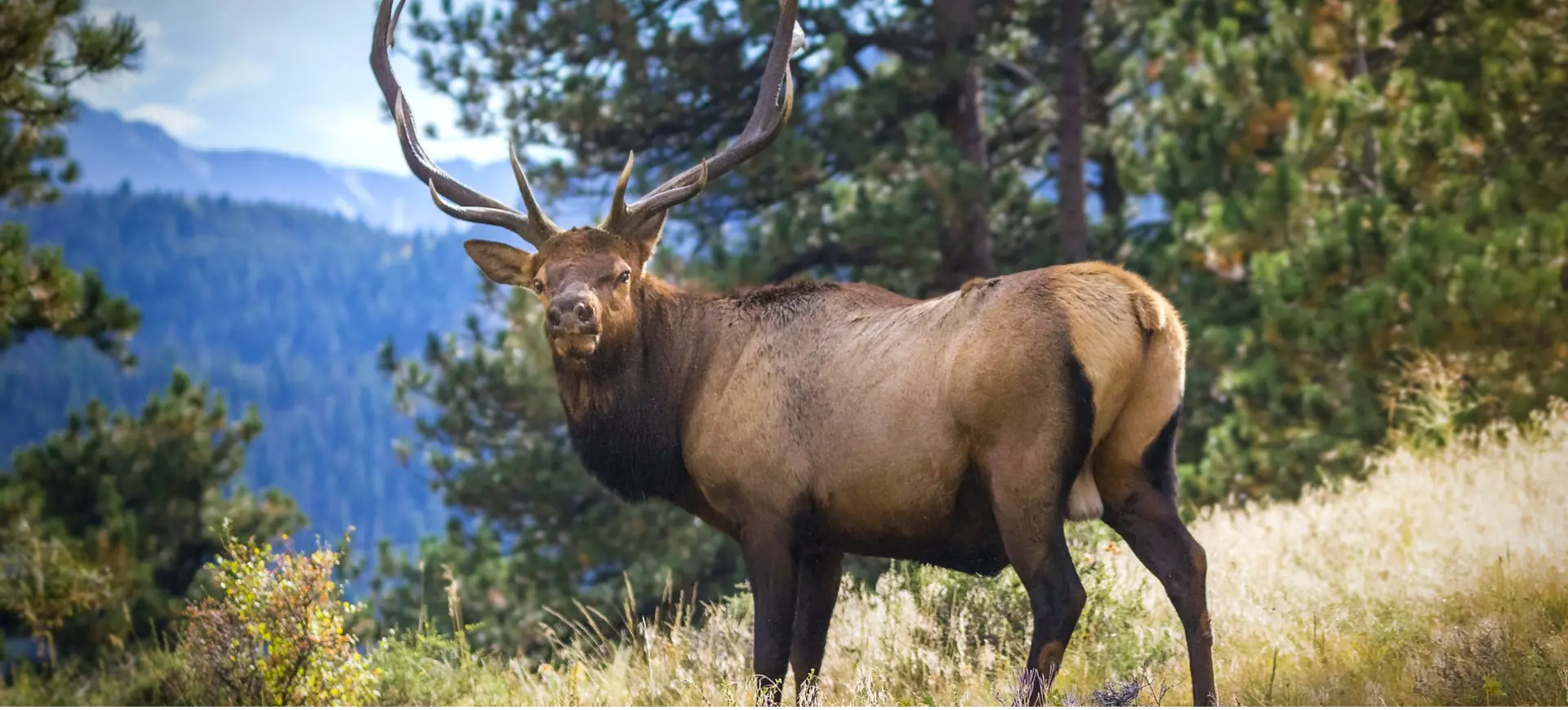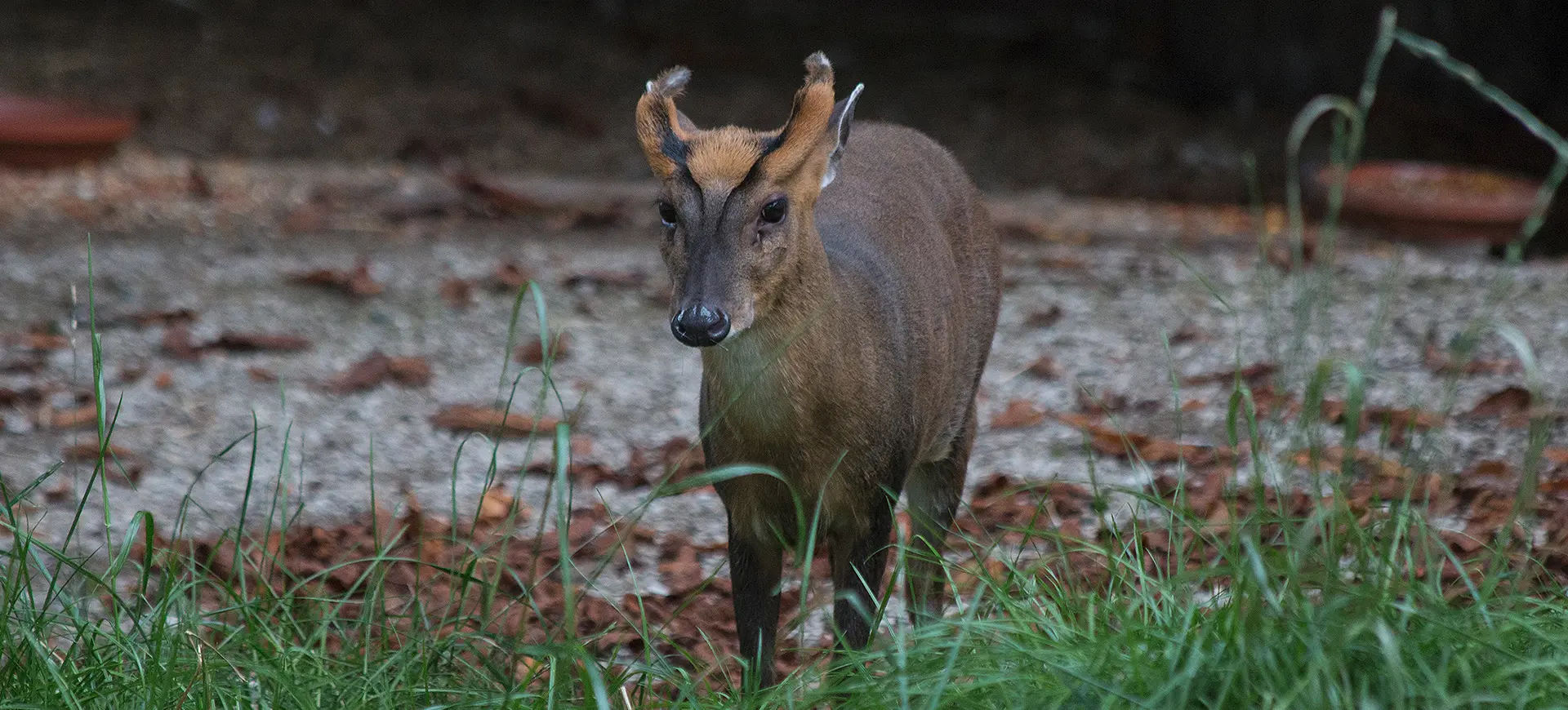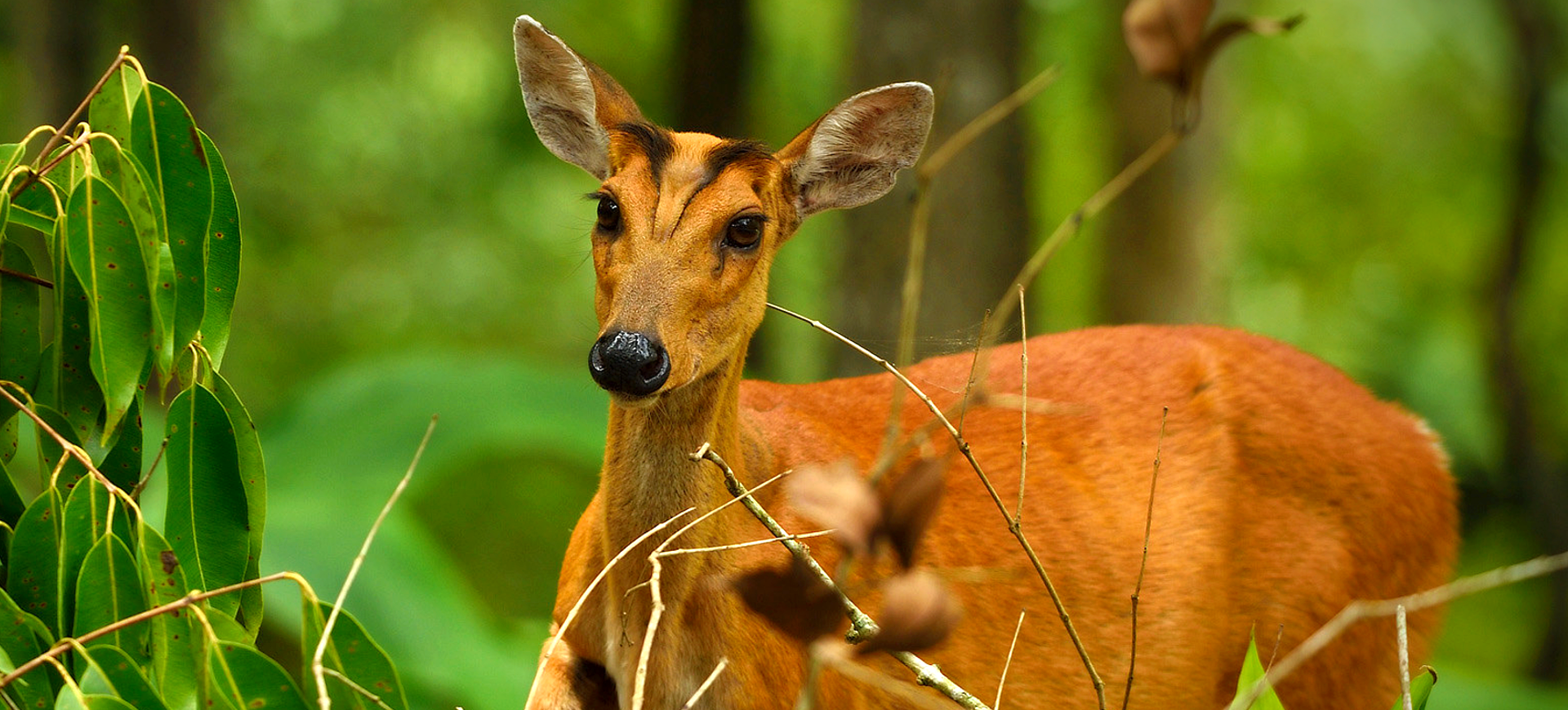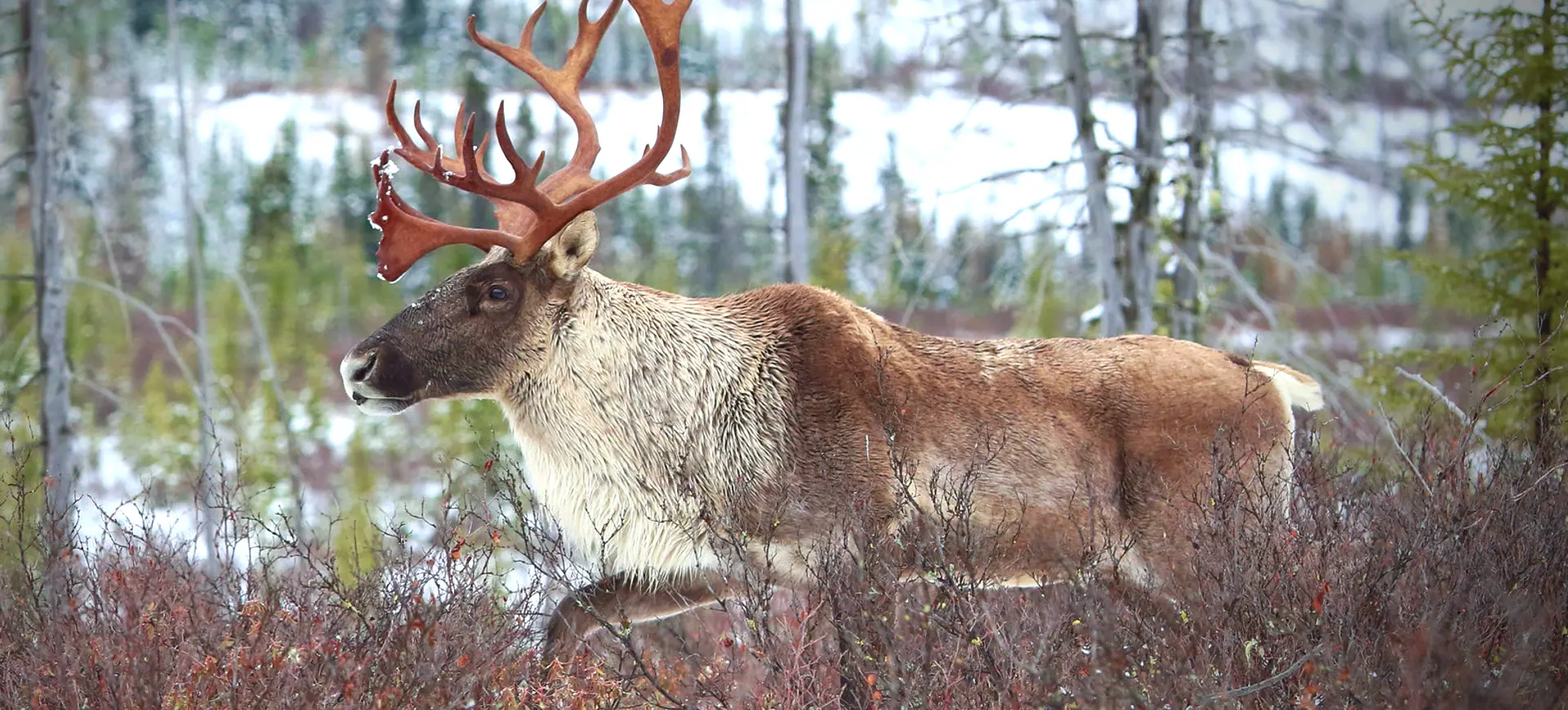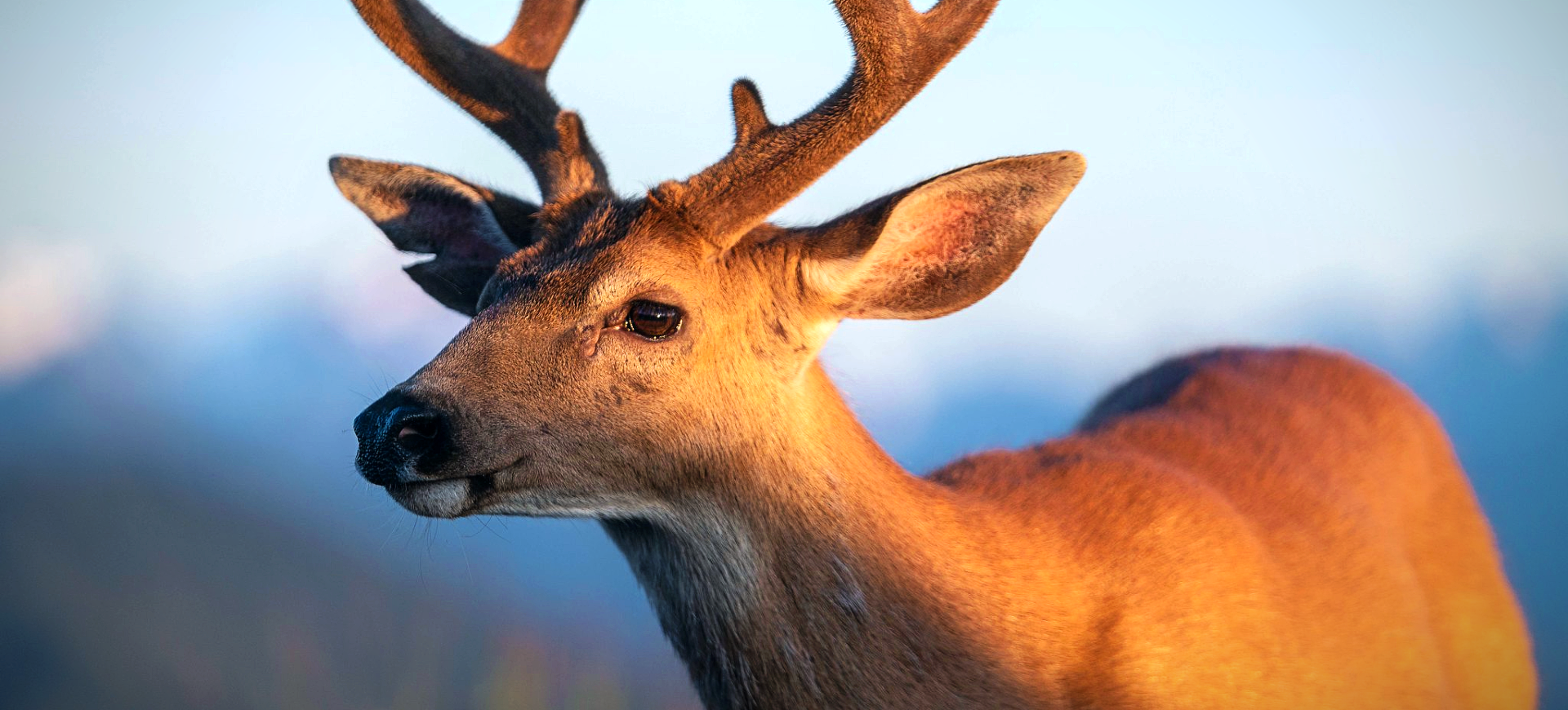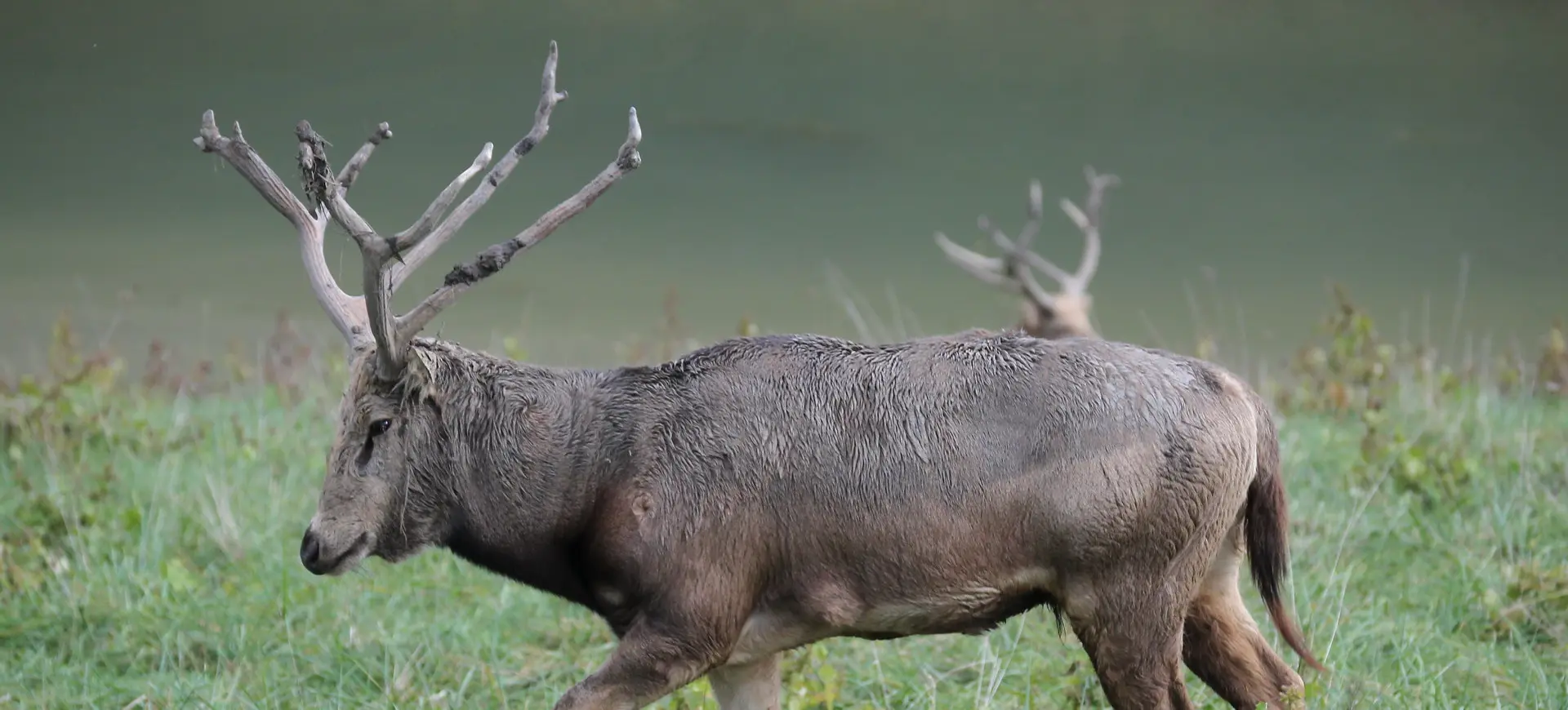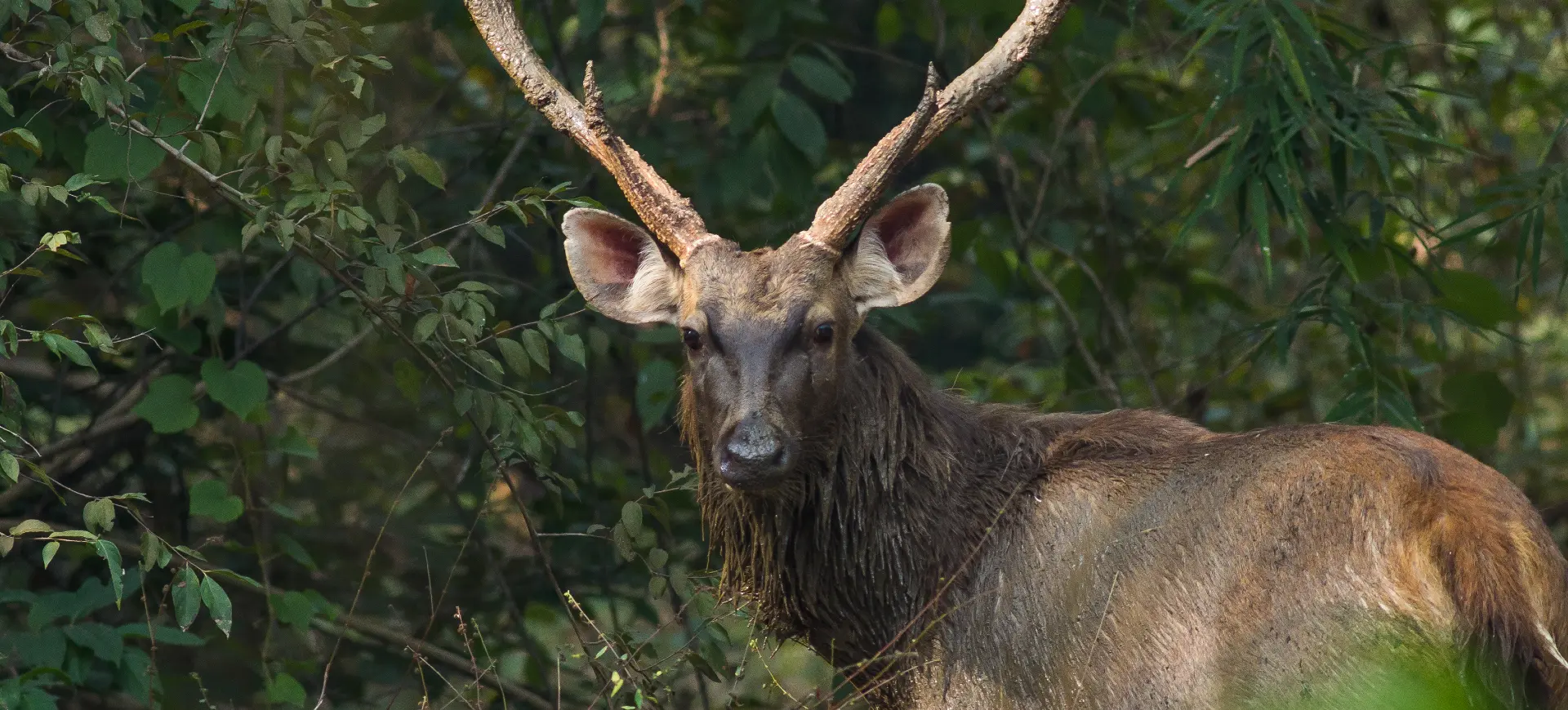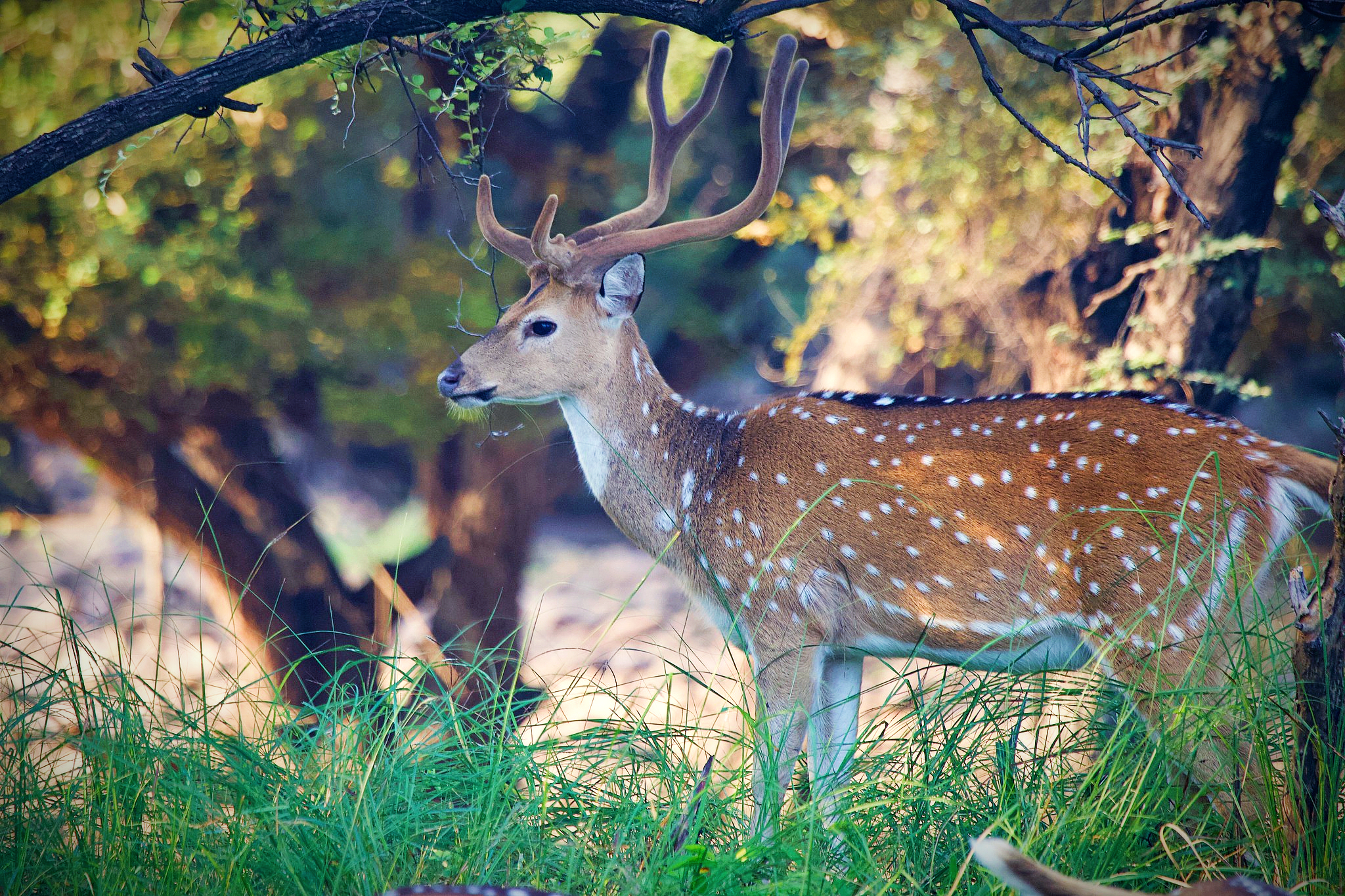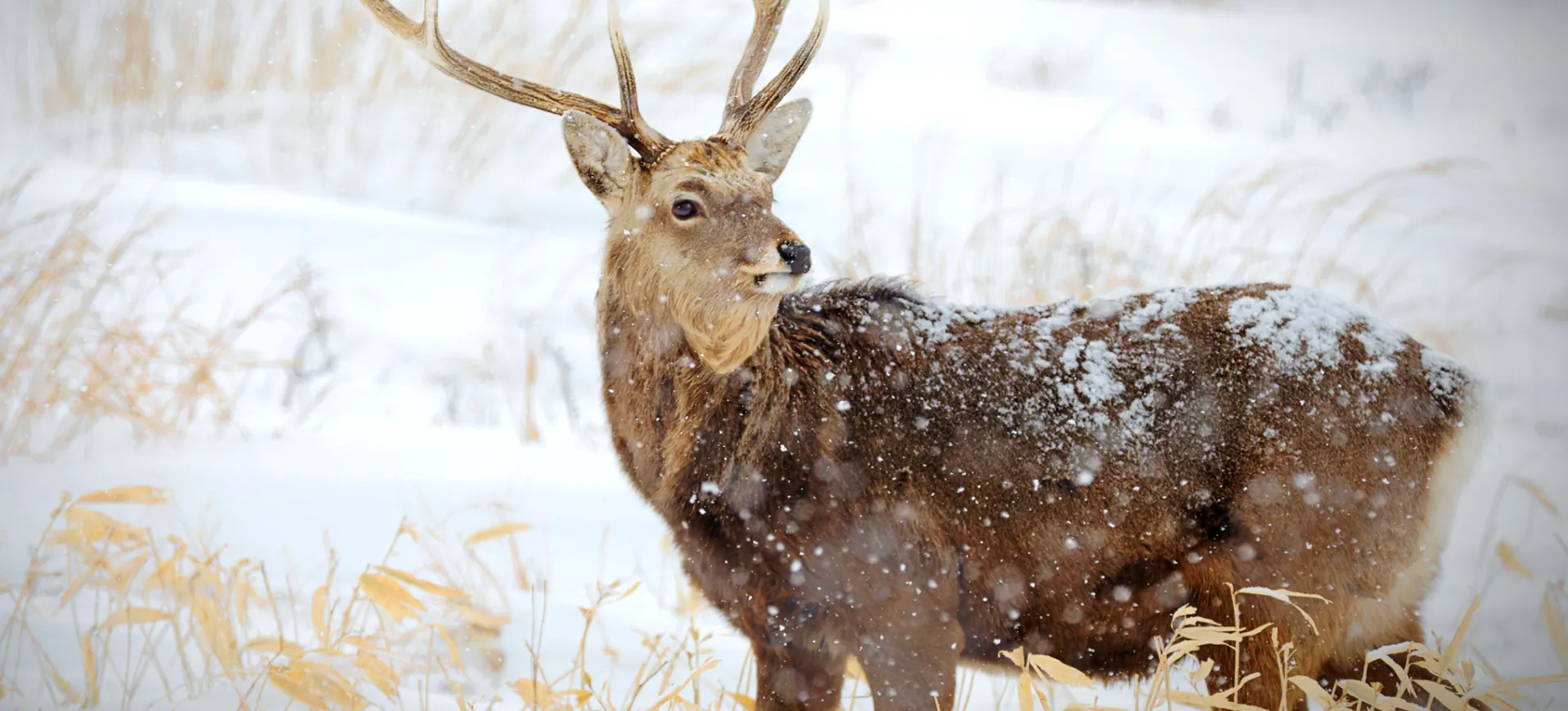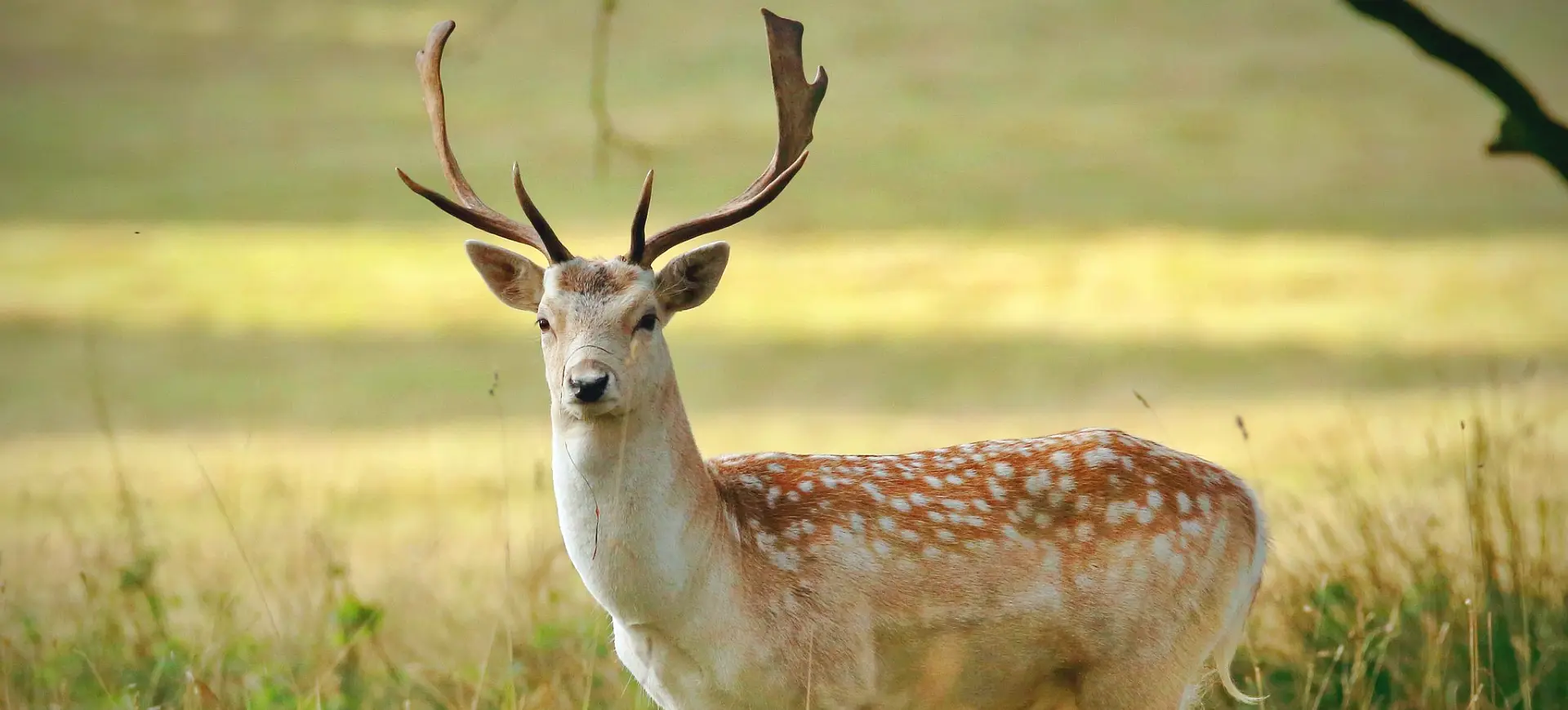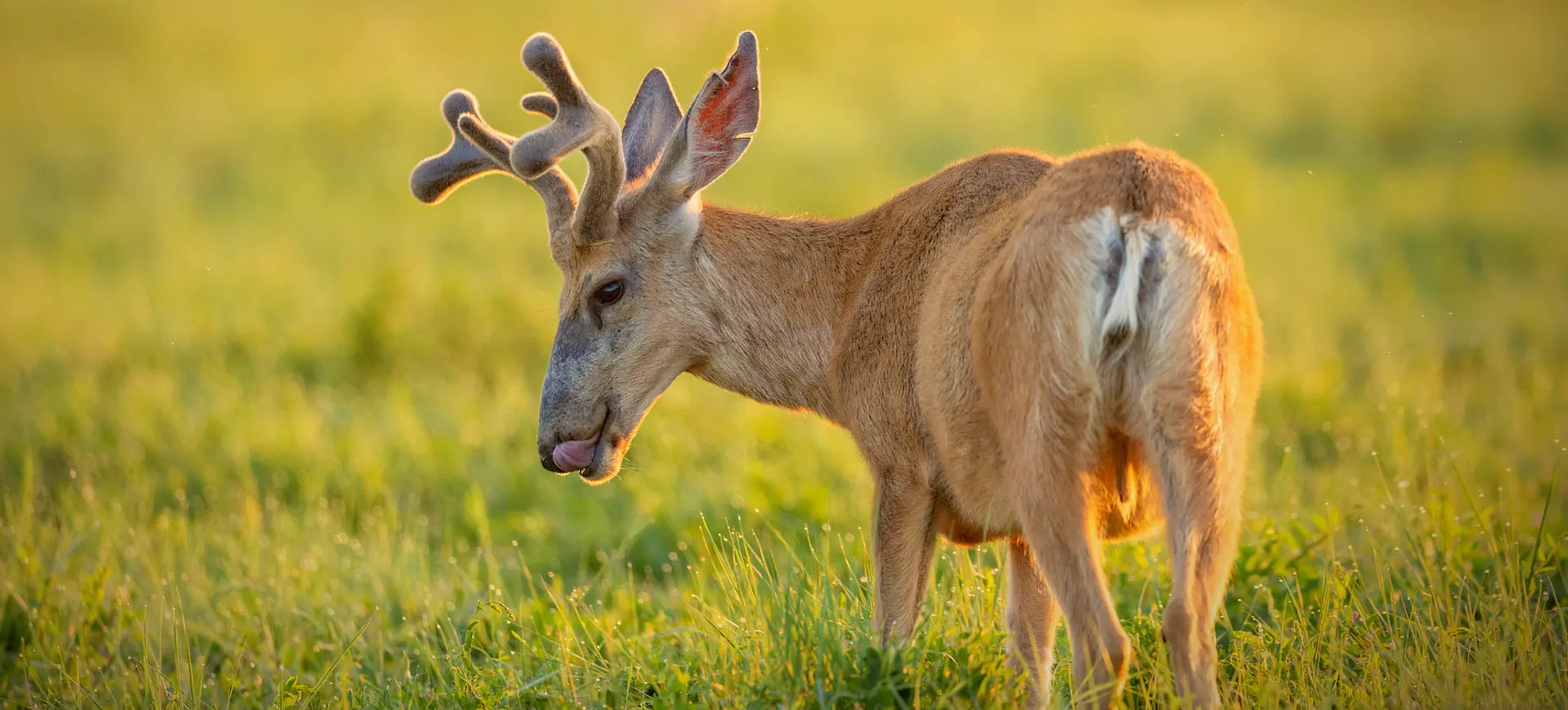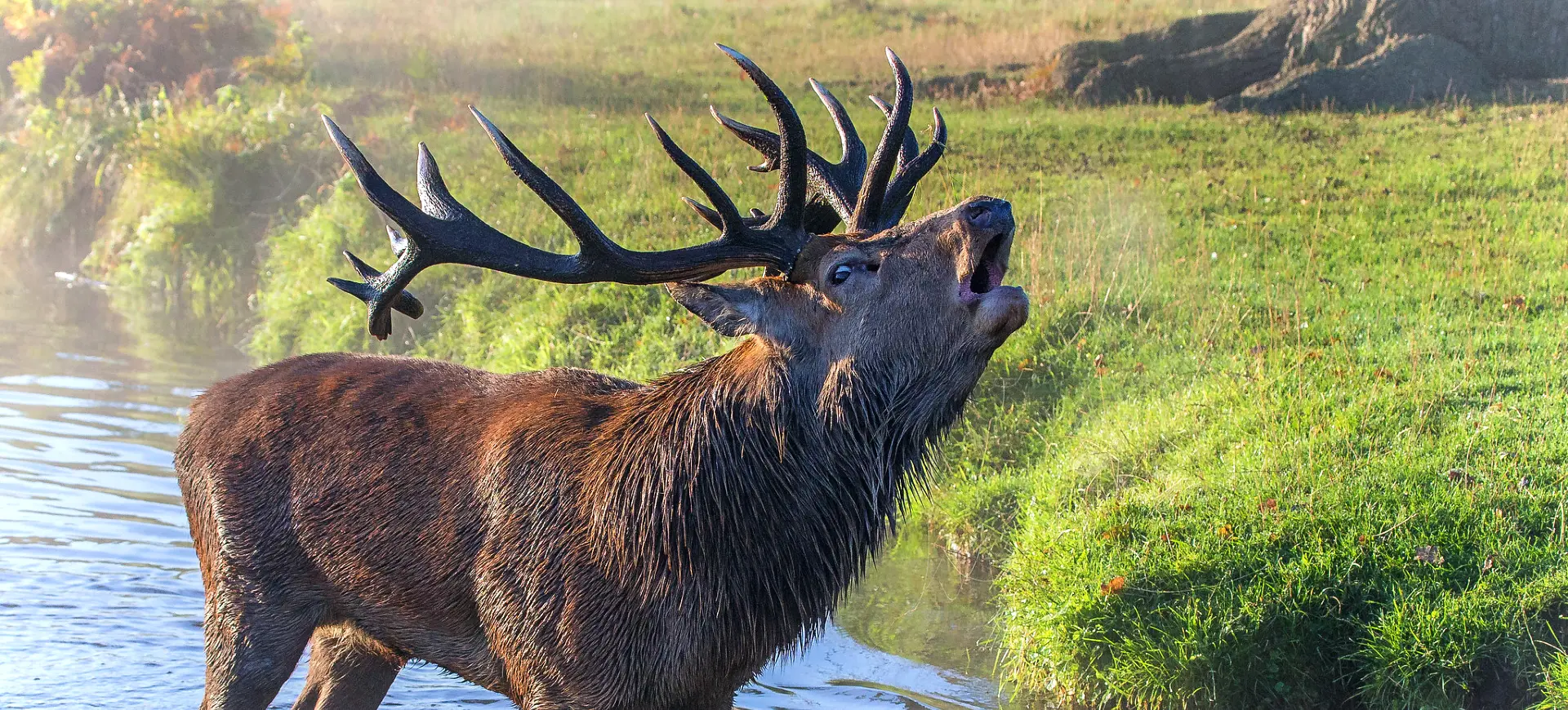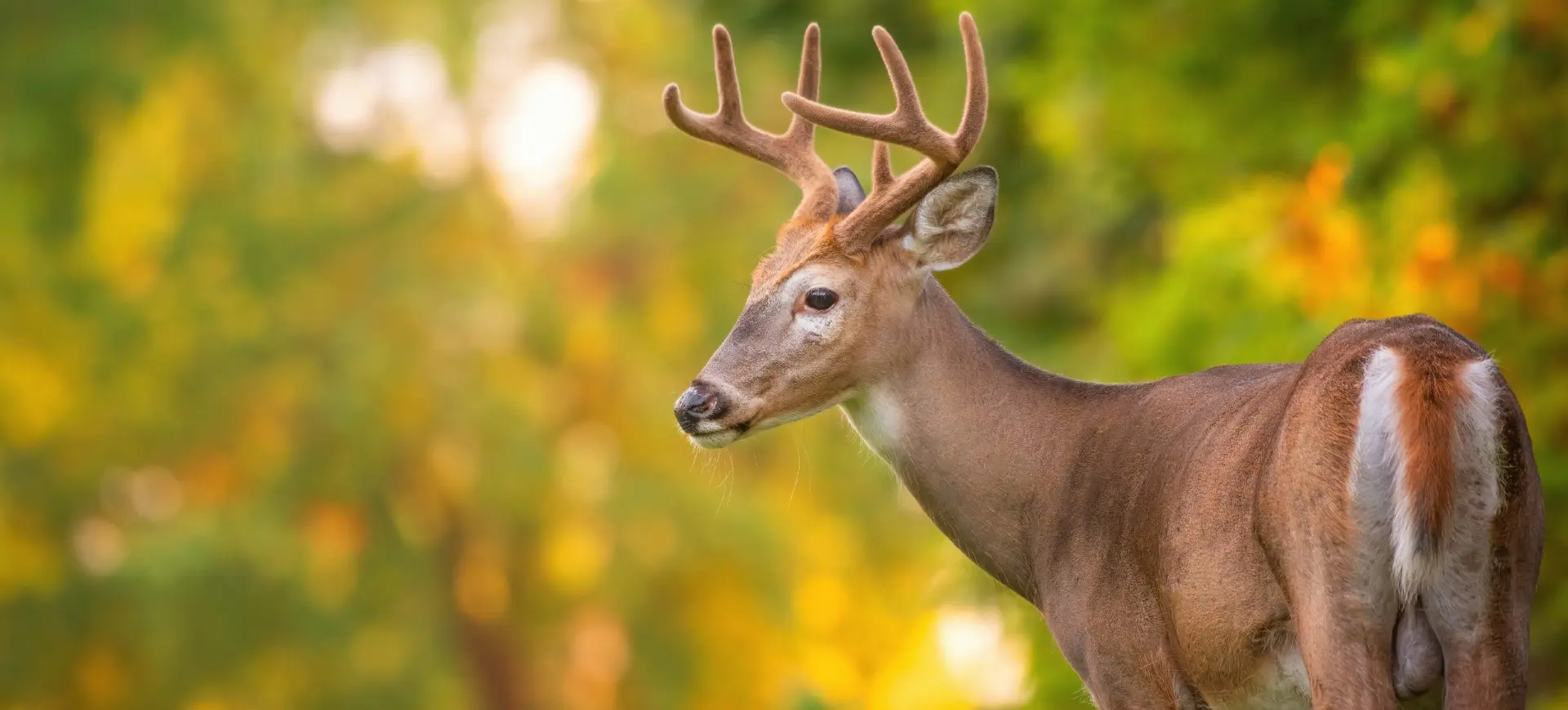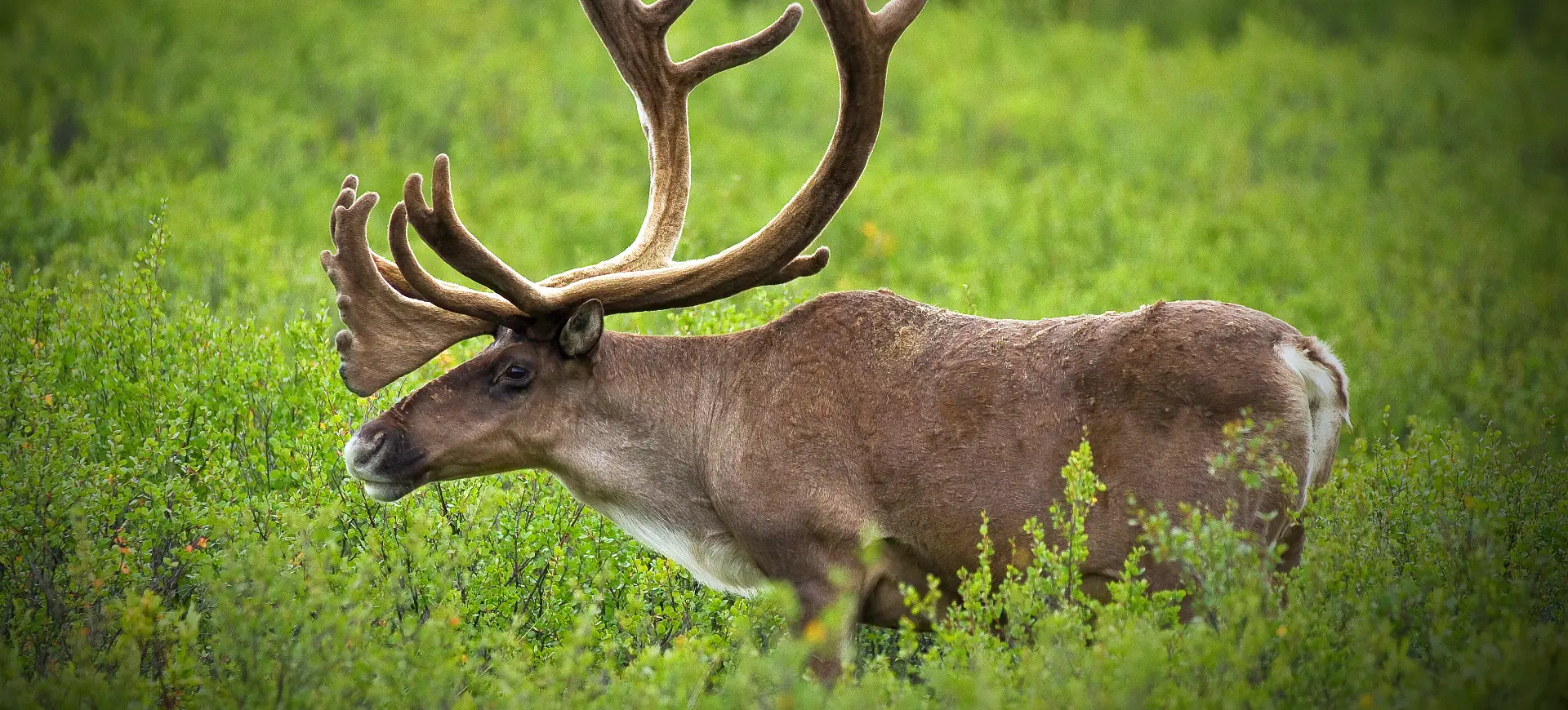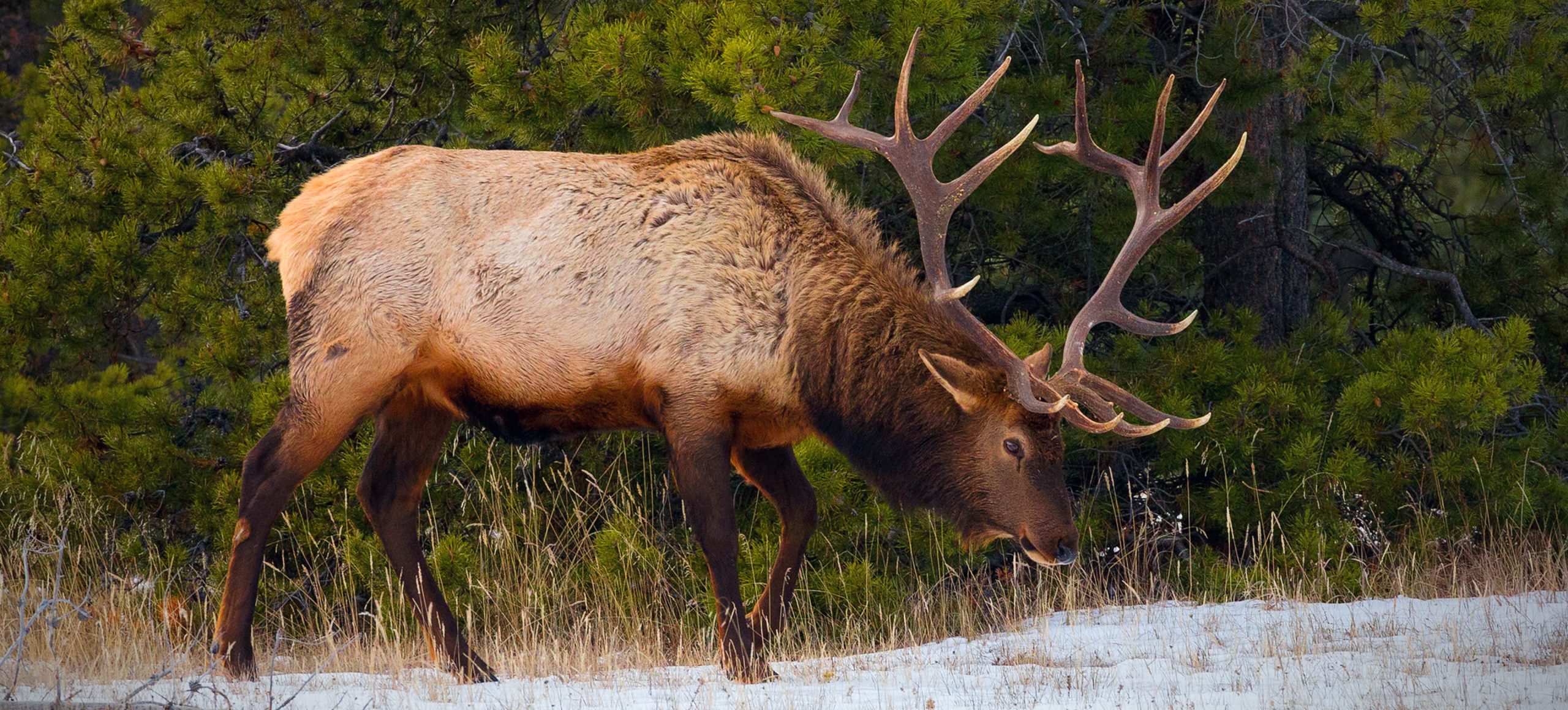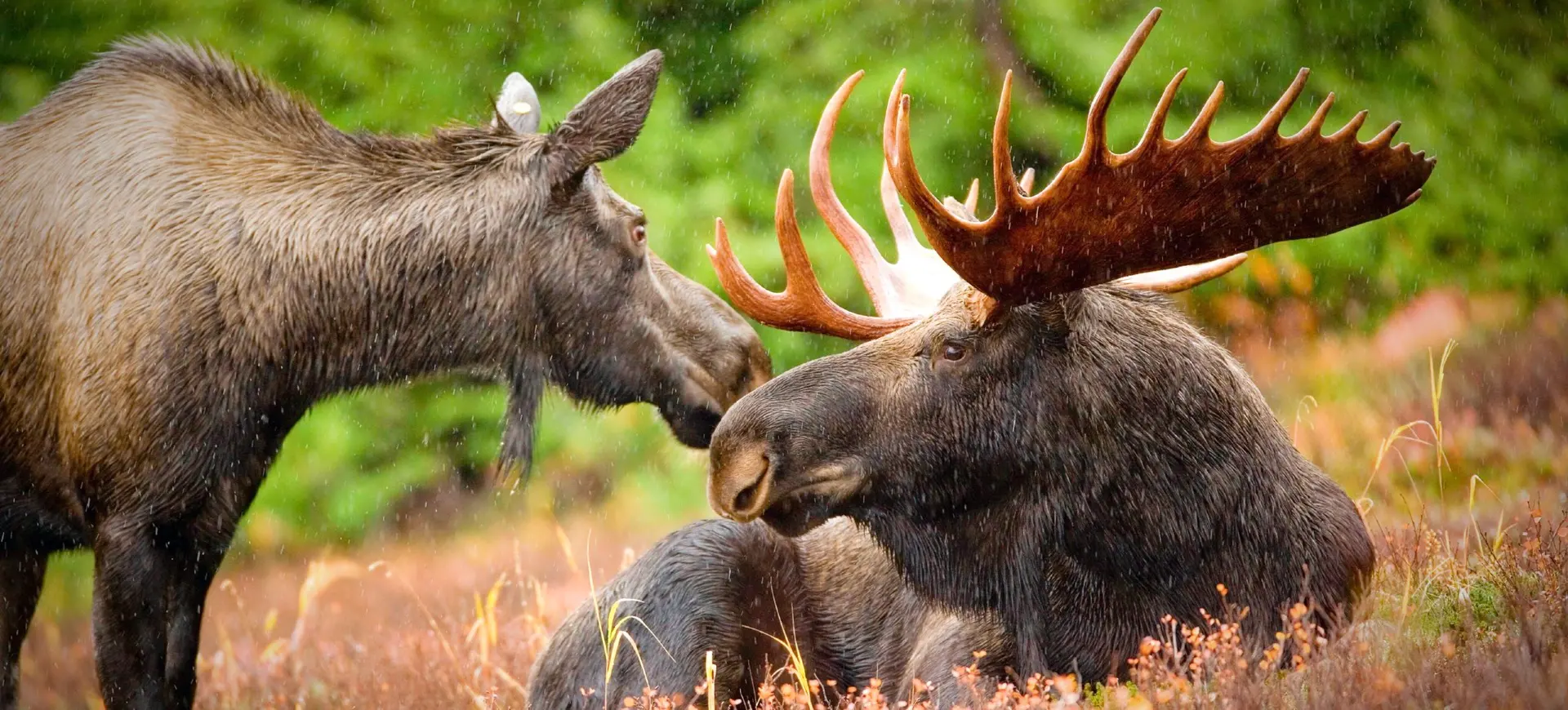Overview
The Central American Red Brocket (Mazama temama) is a medium-sized deer characterized by its reddish-brown coat and shy, solitary nature. It inhabits tropical forests from southern Mexico through Central America to northwestern Colombia, where it prefers dense understory vegetation. This brocket is primarily nocturnal and crepuscular, emerging at dusk and dawn to forage for leaves, fruits, and shoots. Despite its wide distribution, the species is seldom seen due to its secretive nature and preference for remote habitats.
The Central American Red Brocket plays a crucial ecological role as a seed disperser, contributing significantly to forest regeneration. It is highly sensitive to human disturbance and habitat fragmentation, which can isolate populations and increase vulnerability to hunting. Reproduction typically involves a single fawn born after a lengthy gestation, concealed by the mother in dense vegetation for protection. The species has experienced regional declines in abundance, but remains classified as Least Concern overall.
This brocket deer shows regional variation in body size and coloration, with some populations displaying darker pelage. It moves quietly through the forest, using well-established paths, and relies on cryptic behavior to avoid predators, such as jaguars and pumas. The large, mobile ears and acute sense of smell enable the detection of threats in dense vegetation. Though poorly studied compared to other Neotropical deer, it is considered ecologically significant in maintaining forest dynamics.
Current distribution:
Central American Red Brochets occur from southern Mexico (including Veracruz and Chiapas) through Guatemala, Belize, Honduras, Nicaragua, Costa Rica, Panama, and into northwestern Colombia. They are generally uncommon but locally abundant in areas with extensive undisturbed forest. Distribution is patchy due to habitat fragmentation and localized extirpation from overhunting. Some protected areas, such as La Selva Biological Station in Costa Rica, maintain viable populations.
In many parts of its range, the species is under pressure from subsistence hunting and the conversion of forests to agricultural land or pasture. Connectivity between forest patches is crucial for maintaining genetic diversity and facilitating the recolonization of depleted sites. Regional studies are limited, and precise population estimates remain lacking. Their secretive habits and nocturnal activity contribute to the underreporting of their presence.
Physical Description:
The Central American Red Brocket has a compact, robust body covered in a reddish-brown to chestnut pelage, with the underparts often lighter in tone. Males possess short, unbranched antlers that are shed and regrown annually, usually measuring just a few inches in length. The head is small and wedge-shaped, with large dark eyes and prominent ears that help detect subtle sounds in the forest. The limbs are slender but muscular, adapted for silent movement through dense undergrowth.
The tail is short and inconspicuous, blending with the rest of the coat. Fawns are born with white spots that provide camouflage, but these fade within a few months as the adult coloration develops. Their muzzles are dark and moist, while the lower jaw and chin are often paler. Seasonal variation can occur in coat thickness and shade, with denser fur during cooler periods in higher elevations.

Lifespan: Wild: ~10 Years || Captivity: ~15 Years

Weight: Male: 44–77 lbs (20–35 kg) || Female: 40–71 lbs (18–32 kg)

Length: Male: 35–44 in (89–112 cm) || Female: 34–42 in (86–107 cm)

Height: Male: 24–28 in (61–71 cm) || Female: 23–27 in (58–69 cm)

Top Speed: 35 mph (56 km/h)
Characteristic:
Native Habitat:
Central American Red Brocket Deer are native to tropical and subtropical moist forests, ranging from lowland rainforests to montane cloud forests. They prefer areas with dense understory and abundant cover, which protects them from predators and human disturbance. These habitats offer diverse food sources, including fruits, leaves, and flowers from a wide variety of plant species. The species is also found in secondary growth and regenerating forests, reflecting some ecological adaptability.
In montane regions, they occupy elevations of up to approximately 3,000 meters, although most populations are found at elevations below 1,500 meters. Riparian corridors and forest edges are important for movement and foraging. Human encroachment and deforestation have reduced suitable habitats in much of their range. Remaining forest fragments are critical refuges supporting their continued survival.
Climate Zones:
Biogeographical Realms:
Continents:
Countries:
Diet:
Diet & Feeding Habits:
Central American Red Brocket Deer are primarily browsers, consuming a diet dominated by leaves, shoots, fruits, and flowers, with occasional consumption of fungi. They forage along established trails, carefully selecting high-quality plant material that provides essential nutrients and moisture. Seasonal variation in diet is common, with a greater reliance on fruits and tender shoots during the rainy season when resources are more abundant. Their feeding contributes to seed dispersal, facilitating forest regeneration.
They use a ruminant digestive system to efficiently extract nutrients from fibrous vegetation. Foraging typically occurs at dawn and dusk when temperatures are cooler and predation risk is lower. In areas with agricultural activity, they may opportunistically feed on crops such as beans and maize, sometimes leading to conflicts with farmers. Water is essential, and they regularly visit streams and pools to drink.
Mating Description:
Central American Red Brockets are believed to have a polygynous mating system, with males defending territories that overlap with the ranges of multiple females. Breeding can occur throughout the year, but often shows peaks aligned with rainy seasons that support higher food availability. Gestation lasts approximately 200–220 days, after which females give birth to a single fawn. The mother conceals the newborn in dense vegetation, visiting periodically for nursing.
Males establish territories by marking with scent glands on their face and legs. Courtship includes following, sniffing, and low vocalizations. Fawns remain hidden for several weeks to avoid predation before they begin to accompany their mother. Sexual maturity is typically reached at about one year of age.
Reproduction Season:
Birth Type:
Pregnancy Duration:
Female Name:
Male Name:
Baby Name:
Social Structure Description:
The Central American Red Brocket is a solitary animal, with adults maintaining exclusive home ranges, except during mating. Ranges are marked by scent glands and feces, serving as territorial boundaries and communication signals. Females with fawns are highly secretive and avoid contact with conspecifics to reduce predation risk. Males tolerate limited range overlap with females but are generally intolerant of rival males.
Encounters between adults are rare and often result in avoidance or threat displays. Social interactions primarily consist of courtship and maternal care. Solitary habits and cryptic behavior are effective anti-predator strategies in dense forests. Home ranges are relatively small, facilitating detailed knowledge of local food resources.
Groups:
Conservation Status:
Population Trend:
Overall, the species is still relatively widespread, but population density varies significantly across its range. In heavily forested areas with minimal human pressure, populations are stable and may be locally abundant. Conversely, in regions experiencing extensive deforestation, numbers have declined markedly. Hunting for meat and sport also contributes to local extirpations, particularly near settlements.
Protected areas in Central America and Colombia provide important refuges, but many are too small or fragmented to sustain long-term populations without connectivity. Genetic studies suggest that the isolation of populations may lead to a reduction in genetic diversity over time. Community-based conservation initiatives have been launched in certain regions to mitigate hunting pressure and preserve forest habitats. Continued monitoring is needed to understand long-term trends.
Population Threats:
Habitat loss from agricultural expansion, logging, and infrastructure development is the most significant threat to the species. Subsistence and opportunistic hunting remain widespread and can deplete local populations rapidly. Road construction increases access for hunters and creates barriers to movement between forest patches. Climate change may alter the composition and productivity of forests, which in turn can further impact food availability.
Introduced diseases from domestic livestock may also pose emerging risks. In some areas, conflict arises when deer forage on crops, prompting retaliatory measures such as killing. Fragmentation isolates populations, reducing resilience to environmental changes and human impacts. Effective conservation strategies must integrate habitat protection with community engagement and enforcement of hunting regulations to ensure sustainable use of resources.
Conservation Efforts:
Central American Red Brocket Deer occur in several national parks and reserves across their range, including protected areas in Mexico, Costa Rica, and Colombia. Legal protection exists in many countries, although enforcement remains inconsistent. Conservation NGOs and researchers have promoted habitat connectivity and sustainable use programs. Education initiatives emphasize the importance of deer as seed dispersers and their role in forest ecosystems.
Some studies have begun using camera traps and genetic sampling to gain a better understanding of population structure and trends. Community forest management projects help balance local livelihoods with wildlife conservation. Transboundary cooperation is crucial for maintaining corridors between fragmented habitats. Captive breeding has been limited but could become important if wild populations continue to decline.
Additional Resources:
Fun Facts
- Central American Red Brocket is among the least studied Neotropical deer.
- Their antlers are simple spikes rather than branched structures.
- Fawns have white spots that disappear as they mature.
- They can leap over obstacles up to 6 feet high.
- Their dung piles serve as communication sites and markers of territory.
- They are excellent swimmers and will cross rivers when necessary.
- Despite their name, their coloration varies from reddish to brown depending on the region.
- They are vital seed dispersers for many tropical tree species.
- They freeze motionless when threatened to avoid detection.
- Their large ears help them detect even faint sounds in the dense forest understory.

